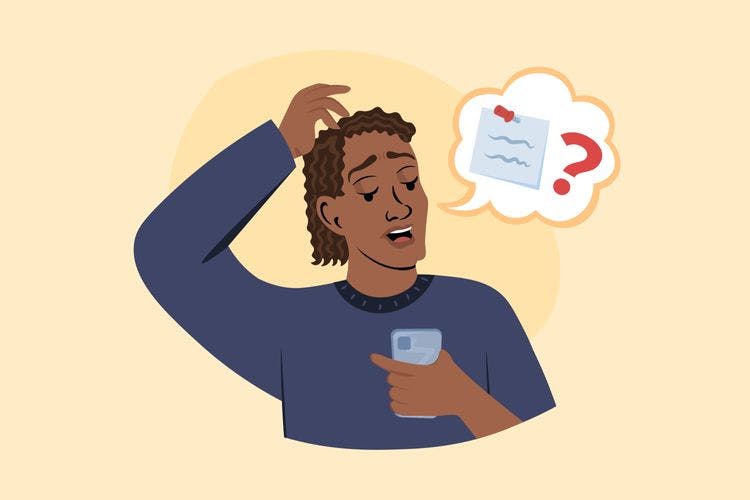Guide to Perfect Pronunciation: How to Roll R in Spanish


You will get a promo code with a discount for our app courses after reading this article.
Contents
Ever tripped on your tongue with the tricky R when speaking Spanish? This distinctive sound is a signature of this language, yet it challenges many learners. Fear not! With this comprehensive guide, you’ll gain the tools to master how to roll R in Spanish. By understanding and practicing the correct tongue placement and pronunciation techniques, you can conquer this linguistic hurdle. We will provide a step-by-step approach to help you learn, practice, and perfect your R rolling.
What Does Rolling R in Spanish Mean?
The rolling R in Spanish, technically known as the alveolar trill, is a distinct phonetic feature that sets the language apart. This sound requires the speaker to produce a rapid vibration of the tongue against the alveolar ridge, the gum ridge just behind the upper front teeth. It’s featured in various words and contexts and influences the meaning and clarity of speech in Spanish.
Understanding how to say R in Spanish involves a bit of theory. Phonetically, the rolling R is denoted by the symbol [r], distinguishing it from the single tap [ɾ], which is a less forceful, single-contact version used in words like caro [‘kaɾo] (expensive). The double R [rr], or the rolled R, occurs in words such as perro [‘pe.ro] (dog).
This phonetic action is not unique to Spanish; several languages worldwide incorporate rolled Rs into their linguistic fabric. These include Italian, Arabic, Ukrainian, etc. However, its prominence in Spanish pronunciation and its role in differentiating words makes it essential for learners aiming for fluency.
From a physiological standpoint, rolling the R involves precise coordination. The tongue must be loose enough to vibrate freely but tense enough to control the movement. Air is directed over the tongue, causing it to trill against the alveolar ridge. This balance between tension, relaxation, and airflow is the crux of achieving the perfect roll.
For English speakers, this sound can be challenging because it does not exist in English. However, understanding the mechanics behind it – from tongue placement to the role of airflow – lays the foundation for effective practice.
How to Roll Your R’s in Spanish: A Step-by-Step Guide
Rolling your R’s can seem daunting at first. It’s a complex sound, after all. But broken down into steps, it becomes manageable. This guide will show you how to master this aspect of the Spanish accent.
Master Correct Tongue Placement
The first step is understanding where your tongue needs to be. Let’s look at how to roll your Rs in Spanish and get your tongue in the right place for perfect pronunciation:
- Position. Place the tip of your tongue against the alveolar ridge, the gum ridge right behind your upper front teeth.
- Relax. Your tongue should be relaxed, not stiff or pressed too hard.
- Gap. Ensure a small gap exists between your tongue and the ridge to allow air to flow.
- Touch lightly. Lightly touch the alveolar ridge; don’t push.
- Visual aid. Use a mirror to check your tongue’s position.
Correct placement is key. It allows your tongue to vibrate with the airflow, creating the roll. Practice this positioning regularly to become comfortable with it.
Begin Tongue Control Exercises
After mastering tongue placement, the next step is to develop control. These exercises will help you gain muscle memory and strength for rolling R in Spanish words.
- Flutter practice. Try to mimic the fluttering sound by tapping the alveolar ridge repeatedly with the tip of your tongue. Think of the sound a helicopter makes.
- Hum and flick. Hum a constant note and, while humming, flick the tip of your tongue against the alveolar ridge. The vibration from humming helps initiate tongue movement.
- Tapping rhythms. Tap the tip of your tongue against the ridge in different rhythms. Start slowly, then increase speed gradually.
- Pronounce D sounds. Repeatedly pronounce a soft D sound using a similar tongue position. With practice, this can transition smoothly into a rolled R.
- Vowel extensions. Attach vowels to the rolled R sound, starting with ‘ra,’ ‘re,’ ‘ri,’ ‘ro,’ and ‘ru.’ It’s easier to roll R’s when followed by a vowel.
Consistent practice of these exercises will strengthen your tongue’s control. It will make the rolled R sound more natural and effortless in Spanish pronunciation.
7
Identify Common Pronunciation Errors
Identifying errors is crucial when learning how to roll your R’s for Spanish. One frequent mistake is substituting the rolled R with a sound similar to the English D or L. This happens when the tongue stiffens or doesn’t vibrate freely against the alveolar ridge, distorting the intended word.
Another error involves excessive force or insufficient air flow when rolling the R. Too much force can lead to a harsh, grating sound. In contrast, too little air prevents the tongue from vibrating correctly. Achieving the right balance is key. It requires the tongue to be loose enough to tremble with the expelled air but firm to stay in place and not flap uncontrollably.
Also, learners often struggle with the placement and movement of their tongue, especially when transitioning from the rolled R to other sounds. This can result in an exaggerated rolling that extends beyond what is natural in Spanish. Integrating R into full words and sentences can help overcome this hurdle.
Set a Practice Routine
A consistent practice routine is essential for mastering the rolled R. Dedicate specific times each day to focus solely on pronunciation exercises. Start with short, focused sessions of about 5 to 10 minutes to prevent fatigue, as the muscles used for R Spanish need time to develop and strengthen. Gradually increase your practice time as you become more comfortable and your muscles adapt.
During your practice, incorporate the Spanish R into various words and contexts. Begin with words where it appears at the beginning, then move to words where it’s in the middle or connected to different vowels. Transition to phrases and sentences to practice the sound in more natural speech patterns.
Integrate your training into daily activities. Practice while doing household chores, driving, or doing other routine tasks. This maximizes your practice time and helps normalize the sound in your everyday speech. Consistency, patience, and integrating practice into daily life are key to mastering the rolled R in Spanish.
Common Myths and Misconceptions About R in Spanish
Many myths surround rolling R’s in Spanish. These false ideas can make learning tougher. Let’s clear up these misconceptions and set the record straight for more effective learning:
- Only native speakers can roll their Rs. Many believe that rolling Rs is an innate skill, but it’s actually learnable with practice.
- It’s impossible to learn after childhood. While learning new sounds can be easier in childhood, adults can absolutely master the rolled R with dedication.
- You must roll every R. Not all Rs are rolled in Spanish. The single R often requires just a light tap of the tongue.
- A stronger breath makes it easier. Forceful breath might hinder rather than help. Controlled, steady airflow is crucial.
With guidance, practice, and patience, anyone can learn to roll R’s in Spanish. It’s not exclusive to native speakers or those who learned as children.
Promova: Language Learning Made Easy
Dive into the world of language with Promova, your one-stop solution for learning new tongues. Whether you’re just starting out or looking to polish your skills, we’ve got you covered. We provide numerous language choices, including English, Spanish, French, Chinese, and many others—all available in one place on our app and website.
We are proud to offer guided courses to simplify your language learning experience. Through them, you can train your grammar, do vocab drills, and try interactive exercises. They suit any level, from beginner to proficient, and are paced to fit your needs.
At Promova, we provide English one-on-one and group sessions to suit everyone's needs. Our 1x1 classes are tailor-made for learners who desire individualized support. Our tutors can focus on specific areas of weakness and set a comfortable pace for you. On the other hand, our group sessions encourage peer-to-peer interaction, which is an excellent method to practice conversation skills in English.
To supplement your learning, we invite you to participate in our free Conversation Club every week. This real-time practice is instrumental in building confidence and fluency in English. The best part? It is completely free! Anyone can join and engage in lively discussions with learners worldwide.
Conclusion
Mastering the Spanish R takes time, patience, and practice. Yes, it can be challenging initially, but don’t feel discouraged. Slowly adopt the steps outlined above and stay consistent with your practice routine. Remember, all learning processes come with trial and error. Celebrate your progress, no matter how small. Incorporate the sound into your regular conversation as much as possible.
Use your discount and learn languages with Promova
Start learningFAQ
How long does it typically take to master the rolled R?
Just like with learning Spanish, the time varies greatly among learners, depending on factors like native language and practice frequency. Some may master in weeks, while others might take months. Regular, focused practice is key to progress.
Can practicing with songs help in learning the Spanish R?
Yes, singing along to Spanish songs can be a fun and effective way to practice the sound. It helps with muscle memory and pronunciation in a rhythmic context.
Does my native language influence my ability to roll Rs?
Yes, if your native tongue includes similar sounds, you might find rolling Rs easier. Conversely, speakers of languages without this sound may need more practice to develop it.
What additional resources can help me learn Spanish?
Several online resources can assist you in mastering your Spanish. BBC Languages provides learner-friendly guides and exercises for all levels. Also, LanguageGuide.org offers interactive vocabulary guides where you can listen to native speakers pronounce different words. The Spanish language learning app by Promova provides guided courses and is available for beginners and advanced learners.



Comments